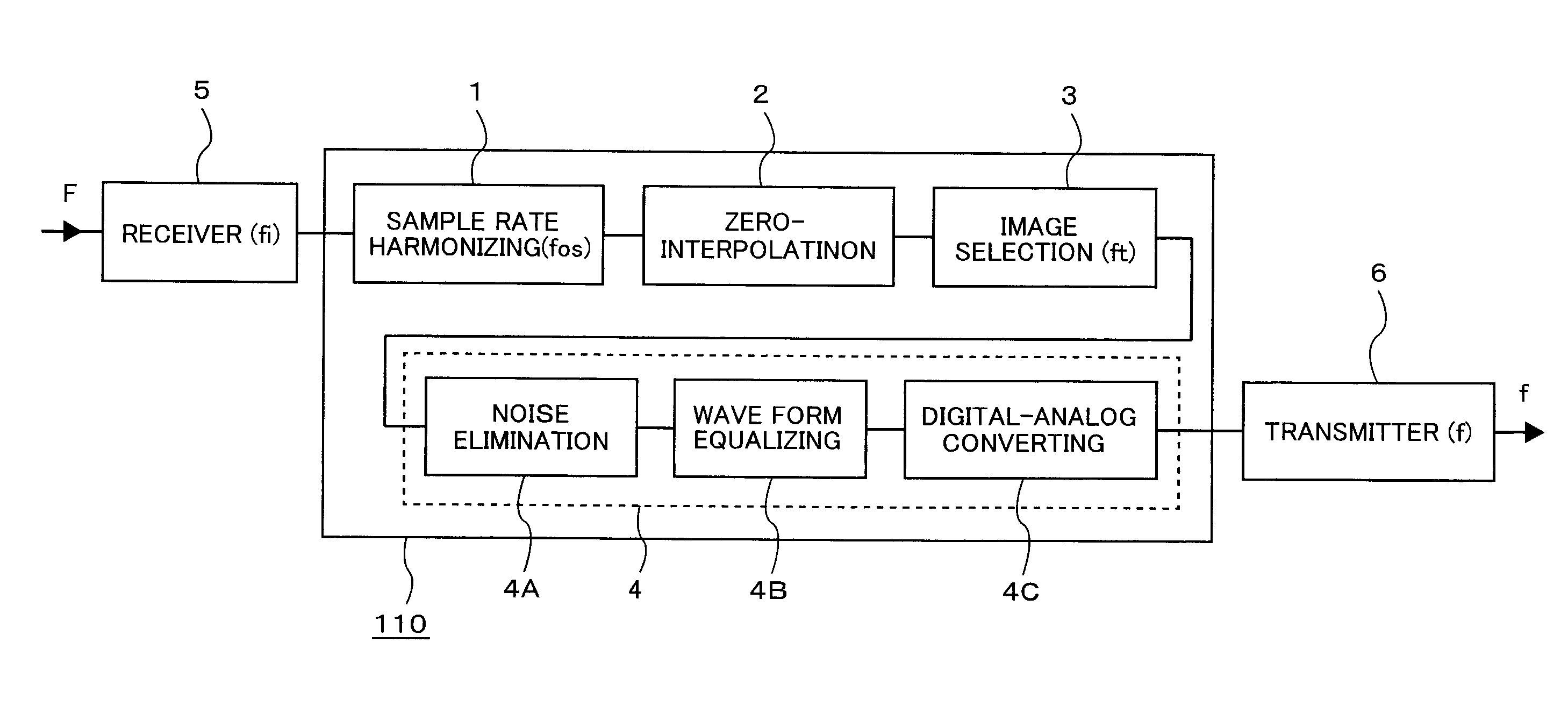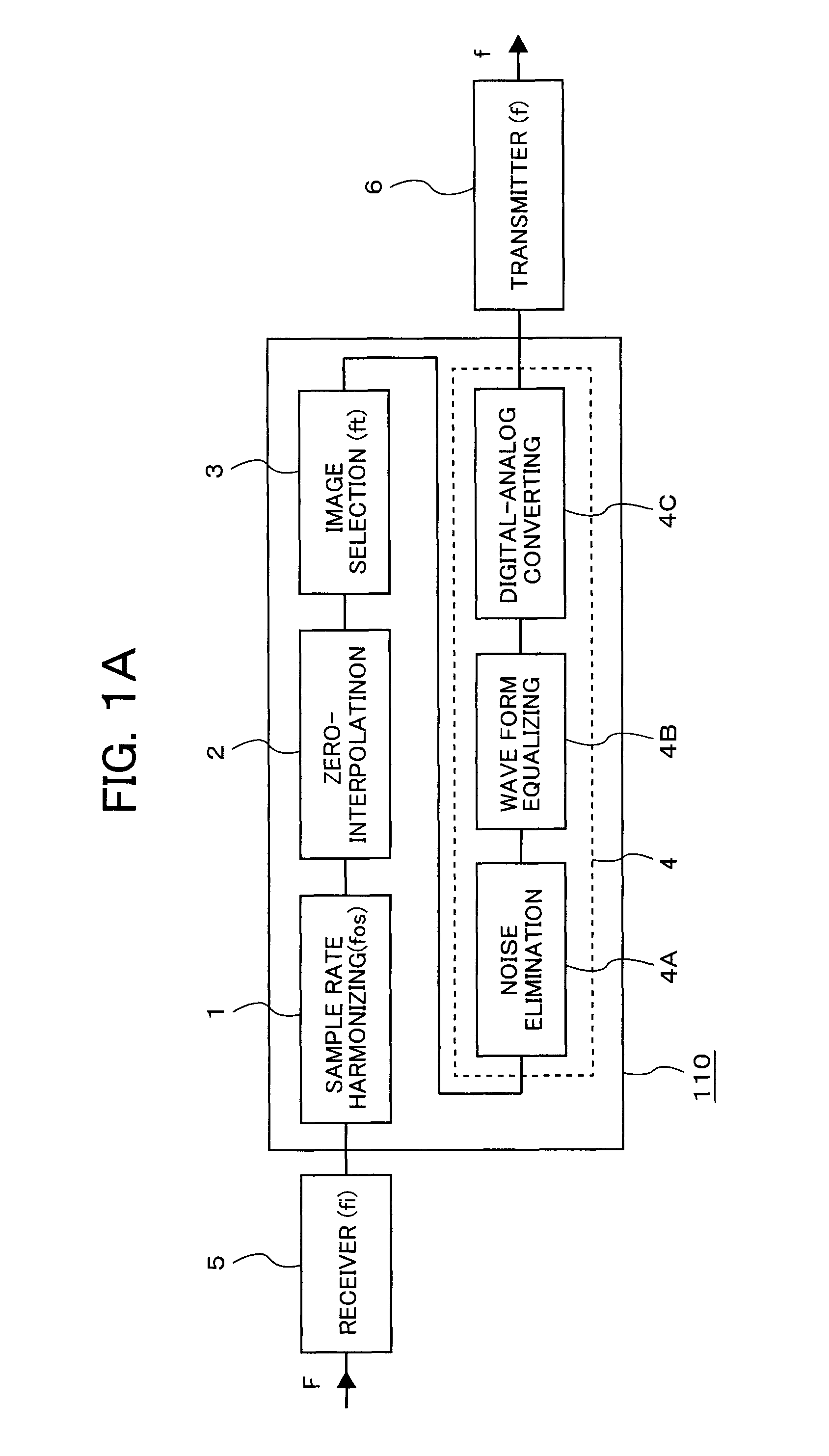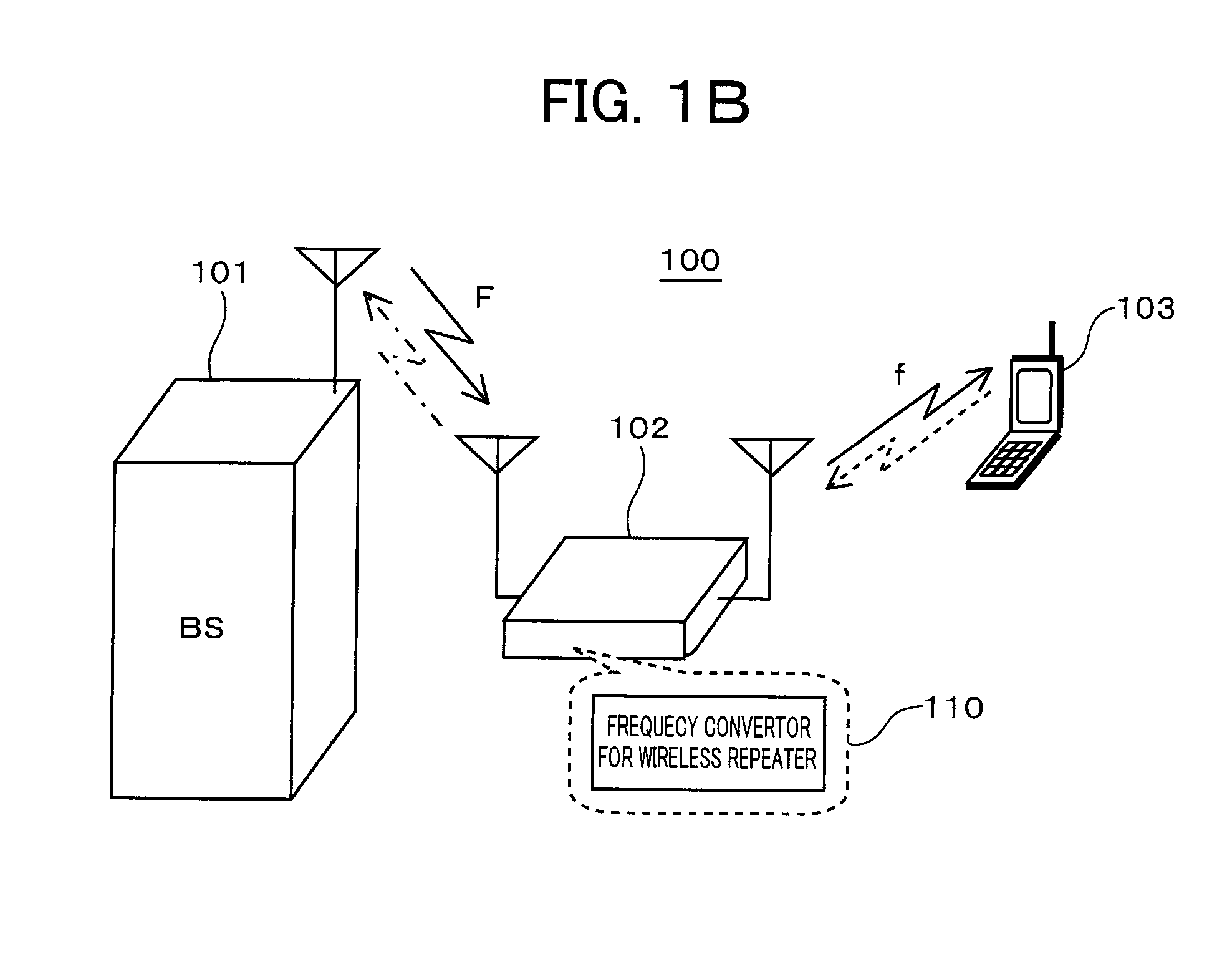Frequency converter and wireless repeater using the same, and wireless repeating system using the same
a technology of wireless repeater and frequency converter, which is applied in the direction of pulse technique, transmission monitoring, instruments, etc., can solve the problems of cost of building the base station, the inability of both base-stations (bsb>1/b>, bsb>2/b>) to provide services, and the difficulty in using the frequencies being used by other wireless systems. to achieve the effect of downsizing the wireless repeater
- Summary
- Abstract
- Description
- Claims
- Application Information
AI Technical Summary
Benefits of technology
Problems solved by technology
Method used
Image
Examples
embodiment 1
[0057]FIG. 1A is a diagram showing a configuration of a first embodiment of a frequency converter of the invention, and FIG. 1B shows an exemplary configuration of a wireless repeating system adopting the frequency converter of the first embodiment.
[0058]A frequency converter 110 includes a sample rate harmonizing circuit 1 (an oversampling unit), a zero-value interpolation circuit 2, an image selection circuit 3, and a digital-analog conversion unit 4, which are cascaded each other. The digital-analog conversion unit 4 includes a noise elimination capability 4A, a waveform equalizing capability 4B, and a DA conversion capability 4C. A first analog signal of reception frequency F is converted to a digital signal via a reception processing unit 5 (an original digital signal generation unit) and input to the frequency converter 110. That is, a first analog signal is digitally converted at a first sampling frequency (fi) to generate an original digital signal via an analog-digital conv...
embodiment 2
[0063]FIG. 2 is a diagram showing the second embodiment of a frequency converter of the present invention. This frequency converter differs from the frequency converter in FIG. 1A in that the digital-analog conversion unit 4 is replaced by a delta-sigma modulation circuit 7. The frequency converter 110 is composed of the sample rate harmonizing circuit 1, the zero-value interpolation circuit 2, the image selection circuit 3, and the delta-sigma modulation circuit 7, which are cascaded each other. An original digital signal of frequency F input to the sample rate harmonizing circuit 1 forms plural data points between the signal sequence of time axis, zero data is defined at the plural data points by the zero-value interpolation circuit 2, and as many as a multiple of sample rate of spectrums are reproduced that have the same shape of the spectrum of the original digital signal. Out of these plural image digital signals, a specific one is extracted by the frequency axis image selectio...
embodiment 3
[0065]FIG. 3 is a diagram showing an exemplary configuration of a wireless repeater of a third embodiment of the present invention. The wireless repeater 102 includes a receive antenna 10, a low-noise amplifier 11, a high rejection filter 12, an analog-digital converter (ADC) 13, a frequency converter 110, a low pass filter 17, a power amplifier 18, and a transmit antenna 20, which are cascaded. The frequency converter 110 includes an oversampler 14, a band-pass filter 15, and a delta-sigma type digital-analog converter 16, which are cascaded. In this embodiment, the frequency conversion delta-sigma conversion circuit 7 of the second embodiment is used for the delta-sigma type digital-analog converter 16.
[0066]A first analog signal input from the receive antenna 10 is amplified by the low-noise amplifier 11, unwanted high-frequency components are eliminated form the signal in order to prevent the generation of an alias that hinders digital-analog conversion when analog-digital conve...
PUM
 Login to View More
Login to View More Abstract
Description
Claims
Application Information
 Login to View More
Login to View More - R&D
- Intellectual Property
- Life Sciences
- Materials
- Tech Scout
- Unparalleled Data Quality
- Higher Quality Content
- 60% Fewer Hallucinations
Browse by: Latest US Patents, China's latest patents, Technical Efficacy Thesaurus, Application Domain, Technology Topic, Popular Technical Reports.
© 2025 PatSnap. All rights reserved.Legal|Privacy policy|Modern Slavery Act Transparency Statement|Sitemap|About US| Contact US: help@patsnap.com



